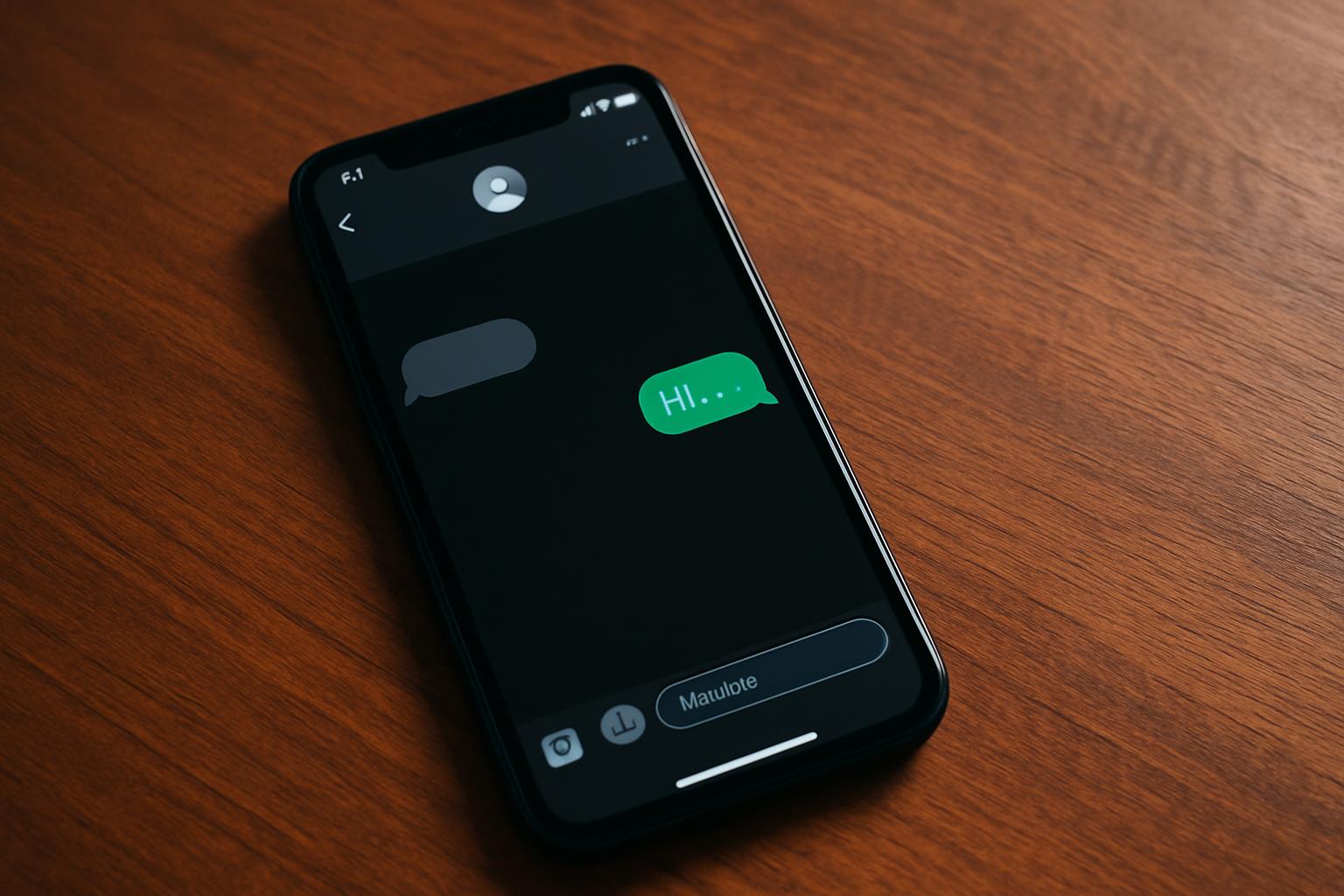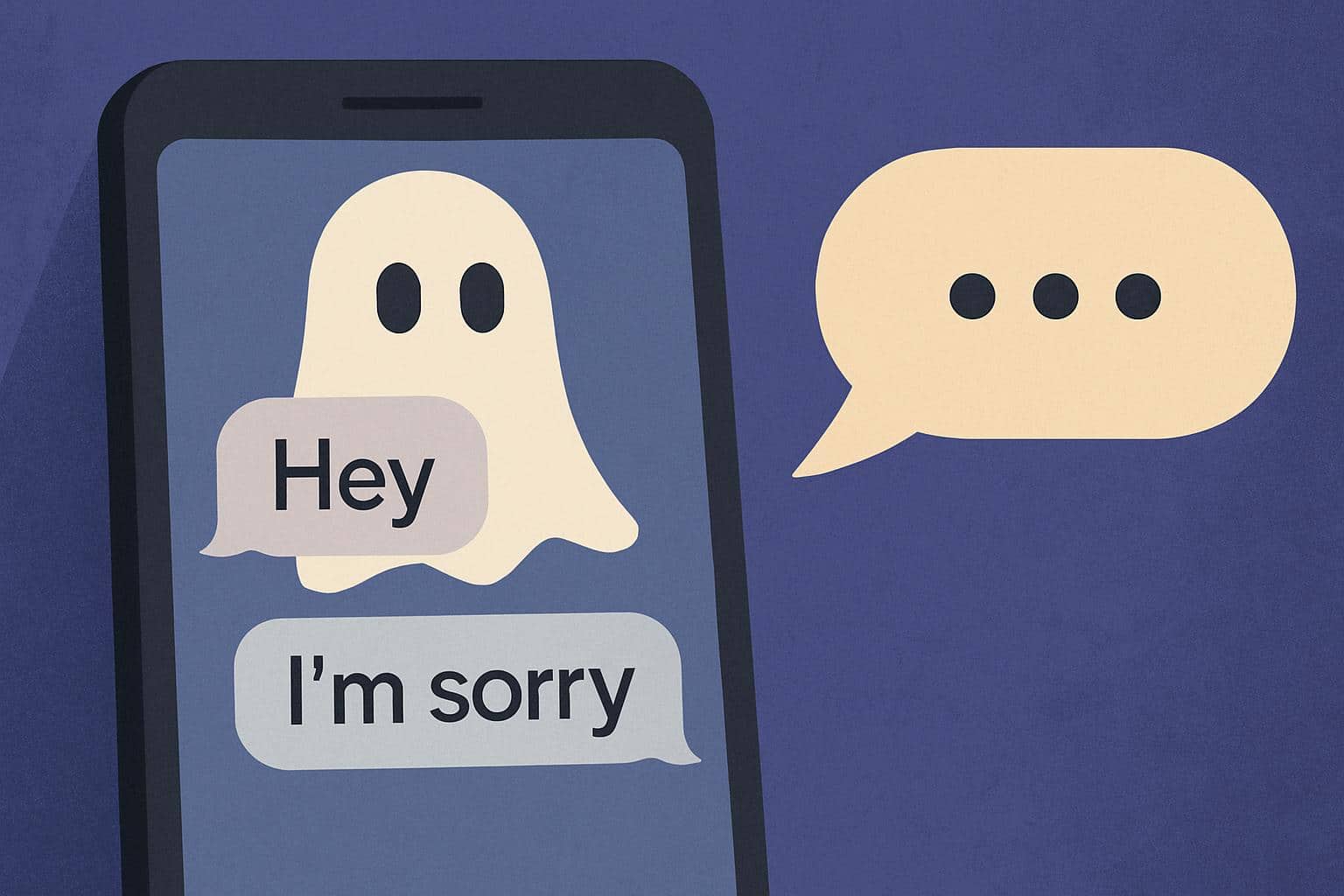Ghosting has been a popular plot twist in modern dating, but the real curveball comes months later with the surprise “hey” or a cautious apology. If your ghoster has reappeared, you’re not alone — and, as it turns out, there’s more to these messages than meets the eye.
We looked into why circling back is so commonplace, what people end up texting one another in follow-up, and the best way to respond without looking hot or cold. The wisdom below comes from relationship research, therapists’ advice, and from real people with DM troubles similar to yours.
- Why Ghosters Reappear and What Motivates the Return
- What Returning Ghosters Usually Send in Their Texts
- How to Read the Message and Spot Flags and Intent
- What the Data and Experts Say About Ghosting
- A Playbook for Responding to a Returning Ghoster
- Two Real-World Outcomes When Ghosters Reappear
- Protecting Your Future Self and Setting Clear Policies

Why Ghosters Reappear and What Motivates the Return
Motivations typically fall into a few buckets: guilt, loneliness, boredom, making an effort to control your image, and being able to say “I can do whatever I want.” Splinter says the most common motivator for reappearing is post-breakup “roster rebuilding.” Communication scholars like Leah LeFebvre have tracked the phenomenon of ghosting during early encounters as a phase that leads to disengagement in “backburner relationships” — a pattern of tactics that those who went silent may regret.
Experts in interpersonal communication say the text-first way of dating lets people more easily engage in both disappearing and reappearing. It’s too easy to disappear, to avoid the discomfort — and just as easy to pop back in when accountability (or loneliness) catches up. Some return at a personal turning point — sobriety or therapy, in transition between lives — trying to make amends and rewrite the way they are perceived by their circles.
What Returning Ghosters Usually Send in Their Texts
- The Accountability Note: “I bungled this and I’m sorry.” These messages take responsibility for the gaffe, refer to the timeline, and do not pass judgment. They’re few and far between, but they matter because they turn ambiguity into clarity.
- The Breadcrumb Ping: “Hey, how are you?” No context, no ownership. It’s a way to dip your toe in without repercussions. If you ask about the disappearance and they deflect, there’s your answer.
- The Crisis Confession: “I was working through X.” A lot of times, that’s real — grief, illness, recovery. When real, it has details and doesn’t just give the one who delivered the harm an excuse but tries to show that he understands how damaging his actions were.
- The Seasonal Reach-Out: Holiday or birthday check-ins that take advantage of nostalgia. Warm tone, ambiguous intention, little effort.
- The Post-Breakup Return: Suddenly single becomes suddenly chatty. You’ll sense urgency to meet up and hesitation in labeling intentions. It’s more about satisfying their ego than it is about you.
How to Read the Message and Spot Flags and Intent
Green flags: Detailed accountability (“I ghosted after our third date”), a direct apology, and single boundary/plan setting (“No expectation of a reply” or “If you’re open, coffee next week”). These are cues of respect toward your time and autonomy.
Red flags: Vagueness, late-night pings, pressure to meet immediately, or blame-shifting wrapped in “I just got busy.” If they discredit your experience or refuse to address a simple “what happened?” they’re telling you whatever future’s coming is going to feel just as the past did.
What the Data and Experts Say About Ghosting
More than two in five Americans say they regularly or sometimes feel disconnected from other people, according to the Kaiser Family Foundation, which is another way of saying that getting ghosted — having a budding relationship abruptly end with no explanation and with virtually no recourse for closure — hardly affects only those who get left behind. (“Ghosting” someone you’re just not into before a certain point of mutual investment? Communication studies published in the Journal of Social and Personal Relationships connect ghosting with increased psychological fallout for recipients versus explicit rejection.)
Interpersonal scholars, too, present ghosting as avoidance coping: It mitigates the sender’s immediate pain but often leads to more remorse — and distress — for both parties. And that’s part of the reason the resurfacers show up late — they’re dealing with their own discomfort, and not necessarily placing yours at the top of the list.

A Playbook for Responding to a Returning Ghoster
If you’ve already had enough: “Thank you for contacting me. I appreciate the apology, but I’m just not interested in going there again. Wishing you well.” Short, civil, final.
If you seek closure, not contact: “I felt hurt by the silence. I do accept the apology, and I’m not going to harass you about this forever, but I’m glad that you owned it.” This is recognition of influence without opening the door.
If you’re open to trying again: “I’m open to talking if we can set expectations. What are you after now?” Then, concrete boundaries — your preferred pace, the way that you like to communicate, a low-stakes first meet-up. If they recoil at clarity, you’ve just saved yourself some time.
Two Real-World Outcomes When Ghosters Reappear
In the case of one non-monogamous dater, a former match reappeared more than a year later after fading into oblivion on plans being made. His message attributed the end in part to a new relationship at the time and “poor communication” with others. She liked the honesty — and declined to reciprocate, since it was evident to her the timing had less to do with her than his breakup.
A third person was contacted by a date from years before in the course of recovery. It was a detailed, sincere apology, and what it did was reframe her self-blame — it felt like she could shake off that shame once and for all. No grand reunion came — and she was okay with that. The treasure was in being seen and named, not in reviving something that had once disappeared.
Protecting Your Future Self and Setting Clear Policies
Know your policy in advance. For casual first dates, you may take a one-off apology and squash it. And for even deeper connections, insist upon clear stewardship and a precise plan before you invest your time again.
Most importantly, know that an apology is information, not obligation. Whether you file the message away or reply to it, the aim is clear: less guesswork, more self-respect, and a dating life that’s in line with your standards, not someone else’s calendar.

